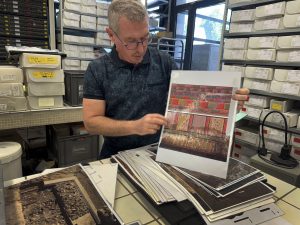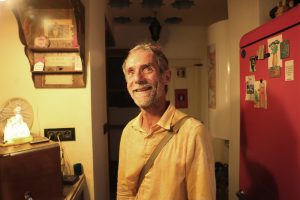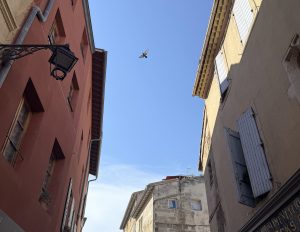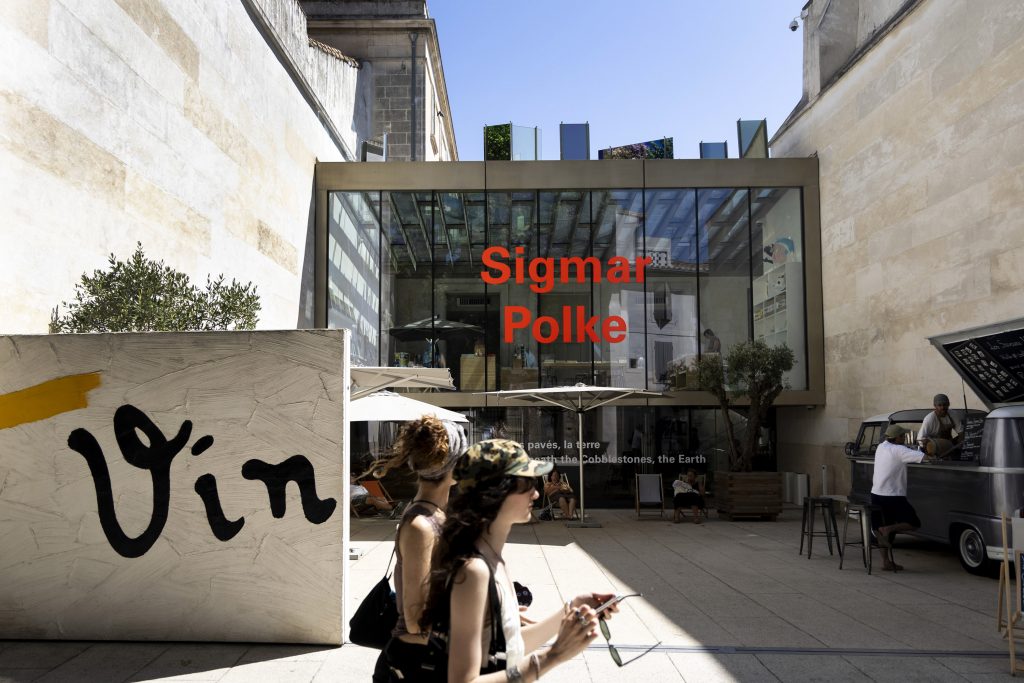
Fondation Vincent van Gogh, a non-profit, is home to temporary exhibits displaying both Van Gogh's work and the work of contemporary artists worldwide, initiating “the important work of artistic mediation,” according to the foundation.
Text and photos by Ali Costellow
“I’ve seen the boulevards of this town full of excited people. And really, that was quite beautiful,”
– Vincent van Gogh wrote about Arles in a March 1888 letter to his brother.
Typically a slow, peaceful place, Arles transforms each summer as starry-eyed art lovers flock to town, bustling around to discover photo exhibits, admire ancient Roman architecture and witness the sites that inspired Van Gogh to create over 300 works of art during his 15-month residency.
Shops line the street, selling tote bags, fans and postcards bearing his famed work. Though closed indefinitely, Le Café Van Gogh, recreated to look like the vibrant yellow bistro the artist painted, remains a popular stop for tourists. Now a library and shops, the former hospital where the artist painted “Garden of the Hospital in Arles” appears much the way it looked in Van Gogh’s famous painting, its courtyard brimming with flowers.
Perhaps the most visited spot for Van Gogh enthusiasts is a renovated mansion with a gate that says “Vincent” in cursive letters, mimicking the artist’s distinctive signature: the Fondation Vincent van Gogh.
People often visit the foundation expecting a building full of original Van Gogh artwork; however, that’s not what they find
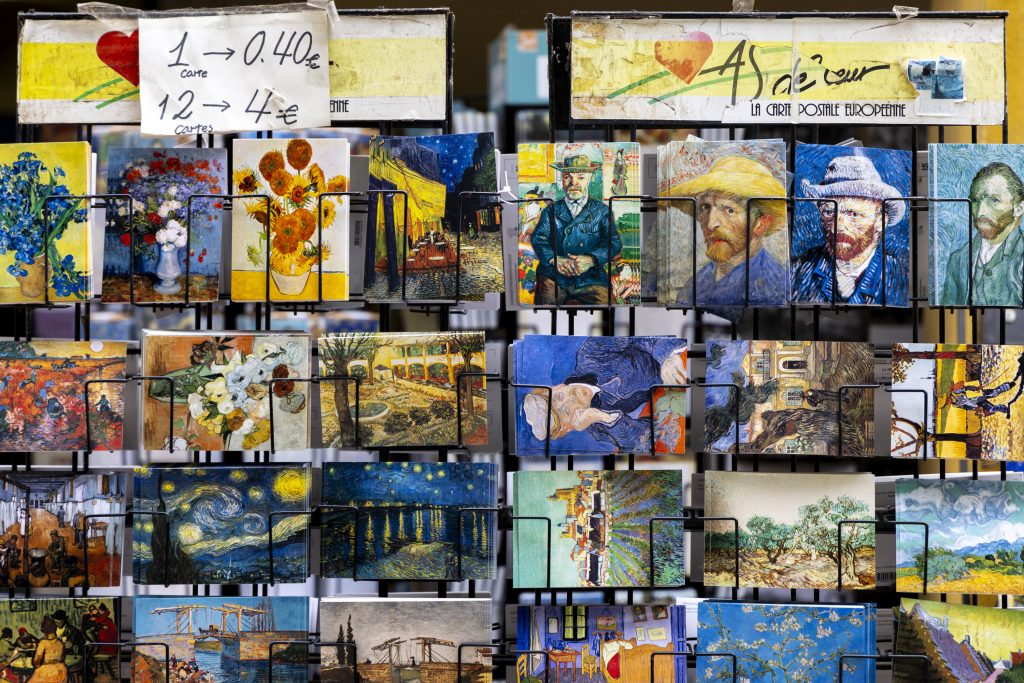
Van Gogh’s Arlesian history
Seeking a calmer and warmer place than Paris, Van Gogh stopped in Arles in February 1888 while on his way to Marseille. Inspired by the beauty of the town and its unique light, Van Gogh decided to stick around.
Before he arrived in Arles, Van Gogh’s work was more modern, utilizing darker color palettes. During his stay, it evolved into the vibrant expressionist and post-impressionist style for which he is known today.
Fondation Vincent Van Gogh Mediator Sara Guti said the town’s distinctive colors and the quality of its light made their way into Van Gogh’s work.
“There’s a magnetical thing here that we can’t explain,” Guti said. “When you come to Arles, you transform yourself. You have a before and after, as Van Gogh illustrated it.”
Van Gogh left Arles in 1889 and died just over a year later in Paris. While his artwork was displayed worldwide for almost a century, none of his pieces were shown in Arles.
That changed in the early 1980s.
The mission
Fondation Vincent van Gogh, founded in 1983 as the Association for the Creation of the Fondation Vincent van Gogh, was created to exhibit the artist’s work in the city that’s still full of his spirit, as well as to showcase contemporary works.
The nonprofit foundation typically only displays one to three loaned Van Gogh paintings at a time. The remainder of the temporary exhibits consists of contemporary art thematically paired with the Van Gogh work on display.
“It’s not an homage, because we don’t invite artists to create something linked to Van Gogh,” Guti said. “It’s more conceptual, it’s more philosophical and with this idea of metaphor.”
Two of Van Gogh’s Dutch paintings are part of the current exhibition: “Peasant and Peasant Woman Planting Potatoes” and “Basket of Potatoes.” The contemporary works of Sigmar Polke, a German artist and photographer, are on display alongside Van Gogh’s potato paintings through October.
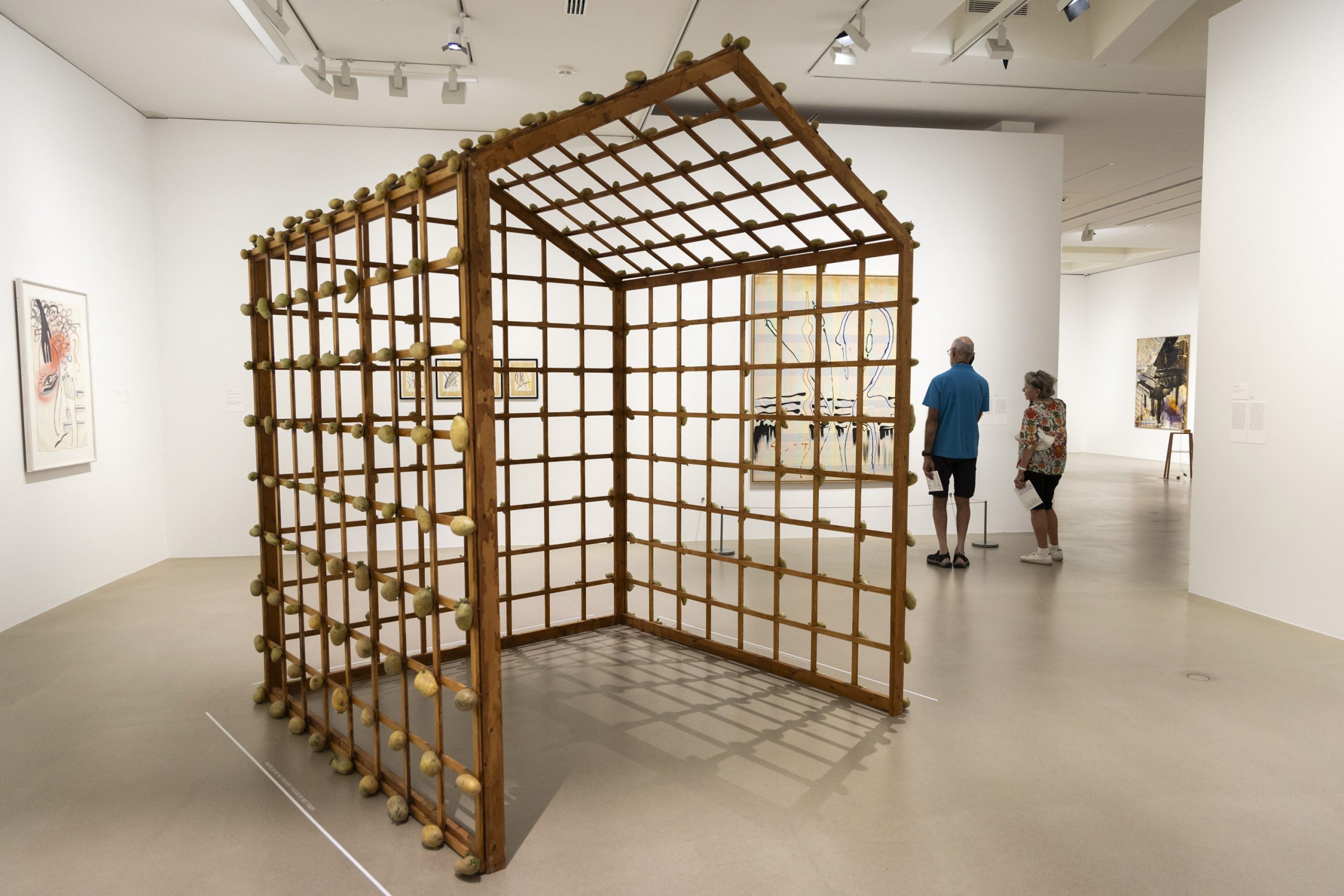
In the last decade, the foundation has exhibited over 100 paintings and 50 drawings by Van Gogh, mostly through a loan partnership with Musée Van Gogh Amsterdam.
“It’s super important to bring back the paintings where they were created,” said Margaux Bonopera, the foundation’s head of exhibitions.
However, Bonopera said the foundation, which receives all of its artwork on loan, does not plan to purchase any Van Goghs for several reasons.
For one, it’s simply not part of the foundation’s mission, she said.
A permanent display would require creation of a conservation team and purchase of expensive insurance. The nonprofit foundation receives money from the Hoffman family, descendants of the founder of the Swiss pharmaceutical company Hoffman-La Roche, but Bonopera said the cost of purchasing paintings is much higher than that of acquiring paintings on loan.
Regardless, there aren’t really any Van Goghs available to be a part of a new collection, she said. Furthermore, a French law, known as loi musées, generally prevents museums from selling works in their collections.
The confusion
Like many tourists, Los Angeles residents Mimie and Sheldon Bloom visited Arles in the first week of July. The reason for their visit?
“Van Gogh,” Mimie Bloom said, laughing.
They arrived at Fondation Vincent Van Gogh expecting a Van Gogh museum. Instead, they were shocked to learn at the ticket desk that the exhibit only included two of the artist’s paintings.
They admitted they could have done more research beforehand. However, they assumed that since “Van Gogh” was in the name of the institution, it would be centered around the artist’s work.
“It is misleading, as far as I’m concerned,” Mimie Bloom said.
Guti said visitors are often surprised when they learn that Fondation Vincent van Gogh is not brimming with the artist’s original work.
“We have this confusion, which is normal,” Guti said, noting that with Van Gogh in the name of the institution, visitors “imagine that you only have Van Gogh paintings.”
This misconception, Guti said, can leave visitors disappointed. Some even decide to walk out without seeing the art at all.
“We always say that we are a contemporary art foundation with Van Gogh paintings,” Guti said. “It’s not a Van Gogh museum.”
Irene Guerrier, a Paris native, visits the foundation yearly when in town for Les Rencontres d’Arles photo festival.
Guerrier said putting another artist’s work alongside Van Gogh’s is a unique strategy. However, she said she does not like contemporary art, so she was not that interested in it.
She said she liked last year’s exhibit better since “Starry Night Over the Rhône,” a painting she was more familiar with, was on display.
Not all are displeased, however.
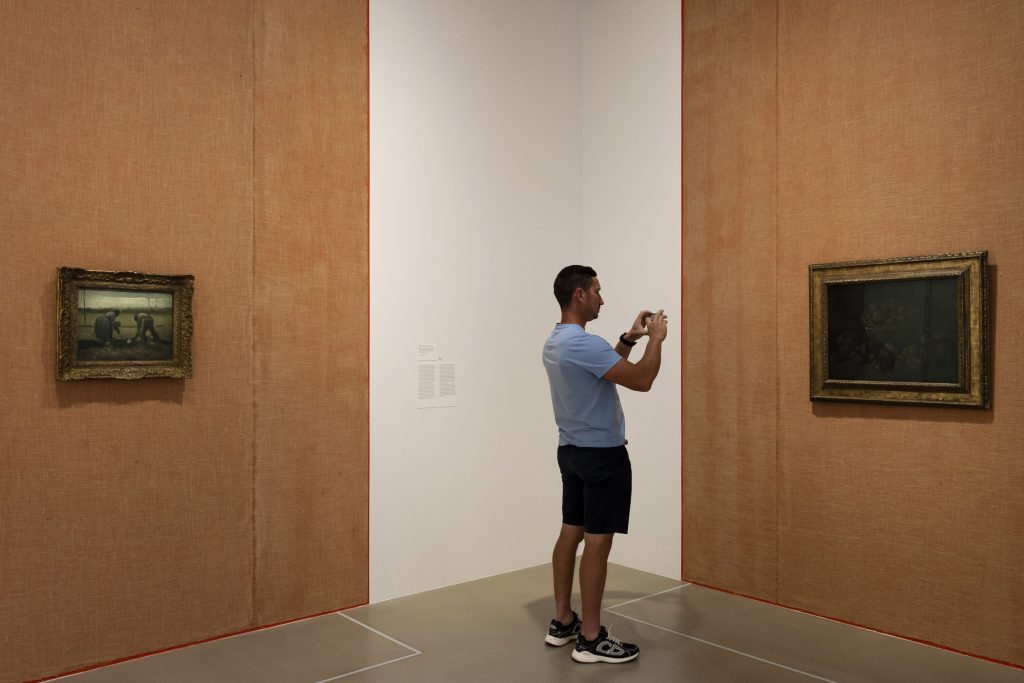
Ben Osborne from Oxford England, said he thought it was amazing the foundation displayed some of Van Gogh’s artwork.
“It’s really nice,” Osborne said. “I’ve never seen a Van Gogh painting in the flesh. I’m over the moon.”
Bonopera said she thinks the “Van Gogh” name creates expectations.
“People are obsessed with Van Gogh,” Bonopera said. “So when you speak about Van Gogh, people believe, and I understand, that Van Gogh belongs to them. People, when they love Van Gogh, it’s like a friend for them. It’s like someone who is super close. It’s really essential for them.”
Bonopera said the idea of Van Gogh excites people so much that visitors sometimes fixate on what they didn’t get to see instead of discovering new art.
She said visitors might better understand the mission if the institution’s name was something along the lines of “Fondation Van Gogh pour l’art contemporain,” meaning “Van Gogh Foundation for Contemporary Art.”
“But, at the same time, we hope that Van Gogh can be an invitation to discover contemporary practice,” Bonopera said.
Van Gogh’s wish
The Fondation Vincent van Gogh stated it “fulfills Vincent’s wish to create in Arles a place of reflection, fertile production and stimulating dialogue among artists,” in a press release about the current exhibition.
Beyond the exhibits, the foundation also hosts events and programming, including symposiums around “the ideas important to Van Gogh,” such as the notion of self-taught artists, the notion of pop, the notion of colors and more, Bonopera said.
“We try to invite people to think about his practice and his life in Arles,” she said.
Bonopera said the people most interested in Van Gogh’s work are other artists, which is why it’s important to have a space “dedicated to their relation to him, or just to present artists.”
“We cannot imagine if he (Van Gogh) would have loved this kind of foundation,” she said. “But I think he would have been happy to see other people take care of artists in general.”
Claire Fanchini served as an interpreter for this story.
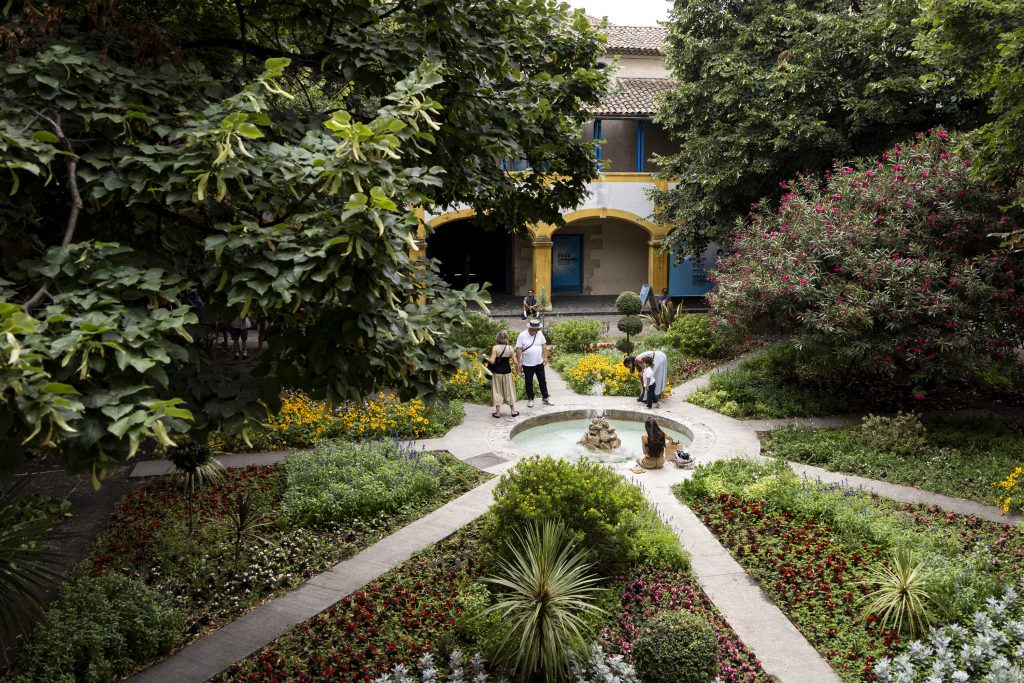
Walking in Van Gogh’s footsteps
Several sites that inspired Van Gogh’s work or honor his legacy can still be found in Arles. Some even display a poster of art he created there so visitors can compare it with how the area looks today.
Guests can stay in an Airbnb inspired by Van Gogh’s bedroom in the famed yellow house, now demolished after suffering bomb damage in World War II.
Where else to go:
-
- L’espace Van Gogh, Place Félix Rey
- Café Von Gogh, 11 Place du Forum
- Vincent Van Gogh Monument, Boulevard des Lices
- Les Alycamps, Avenue des Alyscamps
- Arles Ampitheatre, 1 Rdpt des Arènes
- Rhône River
- Langlois Bridge
Where else to find Van Gogh’s famed works
Want to see the work Van Gogh created in Arles? Here’s where to find some worldwide.
- Van Gogh Museum, Amsterdam, Netherlands: “Bedroom in Arles” and “The Yellow House”
- Orsay Museum, Paris, France: “Starry Night Over the Rhône”
- Kröller-Müller Museum, Otterlo, Netherlands: “Café Terrace at Night”
- Yale University Art Gallery, New Haven, Connecticut, United States: “The Night Café”
- National Gallery, London, England: “Van Gogh’s Chair”
- Oskar Reinhart Foundation, Winterthur, Switzerland: “Garden of the Hospital at Arles”
But that’s not all. Find more here.
